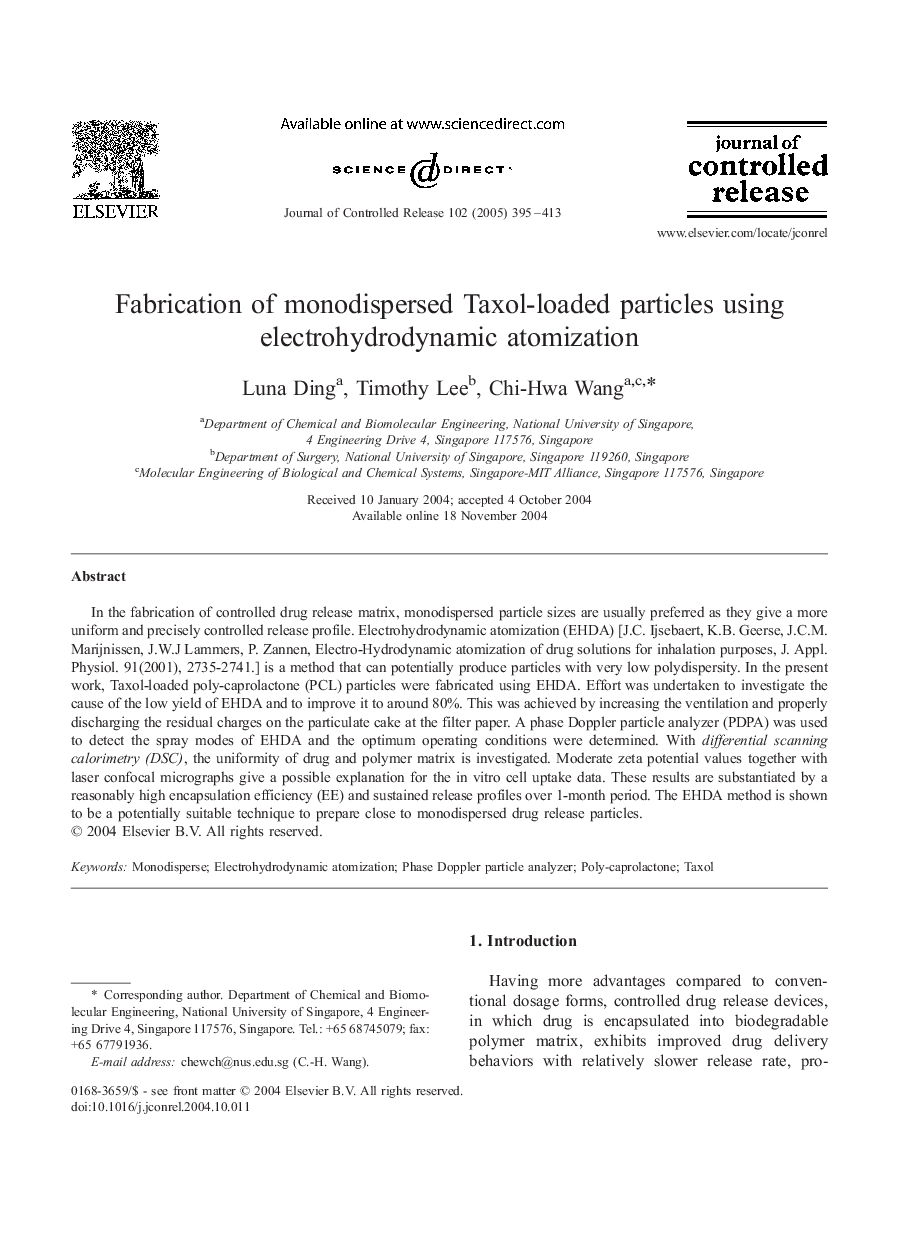| Article ID | Journal | Published Year | Pages | File Type |
|---|---|---|---|---|
| 10613611 | Journal of Controlled Release | 2005 | 19 Pages |
Abstract
In the fabrication of controlled drug release matrix, monodispersed particle sizes are usually preferred as they give a more uniform and precisely controlled release profile. Electrohydrodynamic atomization (EHDA) [J.C. Ijsebaert, K.B. Geerse, J.C.M. Marijnissen, J.W.J Lammers, P. Zannen, Electro-Hydrodynamic atomization of drug solutions for inhalation purposes, J. Appl. Physiol. 91(2001), 2735-2741.] is a method that can potentially produce particles with very low polydispersity. In the present work, Taxol-loaded poly-caprolactone (PCL) particles were fabricated using EHDA. Effort was undertaken to investigate the cause of the low yield of EHDA and to improve it to around 80%. This was achieved by increasing the ventilation and properly discharging the residual charges on the particulate cake at the filter paper. A phase Doppler particle analyzer (PDPA) was used to detect the spray modes of EHDA and the optimum operating conditions were determined. With differential scanning calorimetry (DSC), the uniformity of drug and polymer matrix is investigated. Moderate zeta potential values together with laser confocal micrographs give a possible explanation for the in vitro cell uptake data. These results are substantiated by a reasonably high encapsulation efficiency (EE) and sustained release profiles over 1-month period. The EHDA method is shown to be a potentially suitable technique to prepare close to monodispersed drug release particles.
Keywords
Related Topics
Physical Sciences and Engineering
Materials Science
Biomaterials
Authors
Luna Ding, Timothy Lee, Chi-Hwa Wang,
